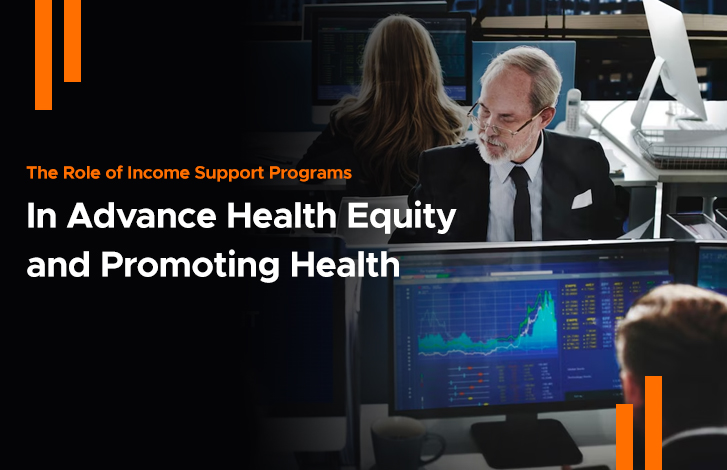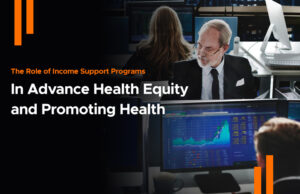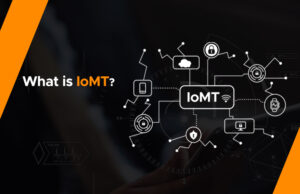The US life expectancy dropped by 1.5 years between 2019 and 2020, hitting its lowest point since 2003, does it signal missing health equity? In 2021, it decreased once more. In contrast to citizens of other high-income nations, the health of Americans has been declining for decades. Life expectancy in the United States was nearly five years lower in 2020 than in other industrialized nations. It has continued to fall as the country has experienced the highest COVID-19 death toll worldwide.
In contrast to the United States, many of its peer nations have begun to see increases in life expectancy in 2021 thanks to the COVID-19 vaccination. Large-scale observational studies have found that those with lower incomes have shorter lifespans and higher morbidity rates than those with higher incomes and that those who are the poorest are most at risk for these health issues.
We are currently experiencing a wave of experimentation with new types of income support, i.e., programs that directly give people and families money. Scientific evidence on child poverty renewed focus on structural causes of poverty, and the COVID-19-related economic crisis all came together to spur active innovation in this area of policymaking at the local, state, and federal levels.
How Income Influences Healthcare
Higher income typically results in better health, according to numerous long-term studies that have established this relationship to be largely causal.
Moreover, decades of observational research show that lower-income people are generally more likely to experience a more significant burden of illness and premature death. Adults in each higher income category of households have a shorter life expectancy and a lower prevalence of many diseases. Research on income support shows a causal relationship between income and health. The evidence of an income gradient is correlational. Still, it is a significant effect that is well documented across various contexts and has several plausible mechanisms.
Poverty and income inequality are well-known contributors to health disparities within populations. It directly impacts health through the products and services people purchase, which can either improve or deteriorate their health. It also affects a wide range of variables, such as social standing and one’s ability to control unforeseen events, which indirectly impact health.
However, Societies with the highest incomes only sometimes achieve the best health outcomes. Over 150 years, mortality rates have fallen in high-income countries worldwide. This mortality decline has been accompanied by sustained long-term economic growth. However, there needs to be more proof that increased economic growth has resulted in better health.
Socioeconomic disparities are one of the most significant determinants of overall health and the severity of health inequalities for high-income countries. Any strategy to lower health inequalities must focus on reducing income inequality among a population.
What Is Health Equity?
Health equity refers to the idea that everyone should have equal access to healthcare services and resources, regardless of their race, ethnicity, gender, social status, or any other characteristic.
This means everyone should have the same opportunities to achieve good health outcomes, such as living a long and healthy life, avoiding preventable diseases, and accessing affordable and effective healthcare.
Health equity also involves addressing the root causes of health disparities, such as poverty, discrimination, and lack of education, and promoting policies and practices that support health equity for all. By striving for health equity, we can create a more just and equitable society where everyone has the opportunity to live a healthy and fulfilling life.
Ways To Improve Health and Health Equity
Researchers have documented numerous ways that income may affect health. People from high-income households are more likely to be able to afford the tools and services they need to stay healthy. Moreover, they can live in neighborhoods with healthier environments, fewer health-harming exposures, less stress, and better access to healthcare and preventive services.
Accessing Resources and Services
Having the financial means to pay for healthy food and drinks, a gym membership, or exercise equipment for physical activity; having access to resources for quitting smoking, or being able to rent or buy a home free of environmental toxins are all examples of being able to afford goods and services that enable people to stay healthy.
Residing In Areas with Healthier Environments
Avoiding exposures that are harmful to health is necessary for living in a healthier environment. For instance, higher-income communities have better access to stores that sell fresh produce and a lower density of fast-food joints. They also have more open spaces, sidewalks, and recreation areas to encourage physical activity, high-quality local services and schools, and more robust social networks. Additionally, these areas may be less polluted, economically depressed, and exposed to less advertising for alcohol and tobacco.
Safety-net Program Effects
Results for Income
Several income support programs can directly raise family income despite having access restrictions in the form of eligibility criteria and application processes. The EITC and TANF are two examples. The federal government offers refundable tax credits known as the Earned Income Tax Credit (EITC) to workers with low incomes to promote work and combat poverty, particularly among families with children. To qualify, employees must meet specific income requirements and file an income tax return.
A fixed percentage of income up to a maximum that changes depending on the number of dependent children is what the credit equates to. TANF is a cash assistance program for pregnant adults with dependent children who are underemployed or unemployed. Federal TANF law requires States to involve TANF recipients in work-related activities. There is no federal requirement for individual work per se. Still, states must meet a population-level “work participation rate,” and they can set rules about who must participate and what activities count as work.
Factors Affecting Health
There is strong evidence that safety-net initiatives that boost income are linked to better health outcomes. For instance, receiving an EITC has been linked to decreased maternal smoking, improved maternal self-reported mental health, and enhanced biological stress markers. Obtaining a family EITC can reduce low birthweight and preterm birth rates in children and parent-reported health status. Despite these encouraging results, EITC receipt has also been associated with a higher risk of obesity in women and children. However, since the EITC generally supports health, unequal access could exacerbate existing health inequities.
Less research has been done on how receiving TANF affects one’s health, but stricter TANF rules, like time limits, have been linked to harmful health outcomes.
It is challenging to distinguish the effects of increased income from employment because TANF requires states to meet population-level work participation rates (and because some states impose individual-level work requirements).
Conclusion
This article explains how low household income can harm one’s health and makes the case that this may cause widespread racial and ethnic disparities in health. According to research, current income support programs like the EITC and TANF can improve health by raising household income.
However, access to these programs is uneven, which can worsen health disparities. In the end, broad policy changes like required income support and universal access to healthcare could also significantly impact health outcomes.







